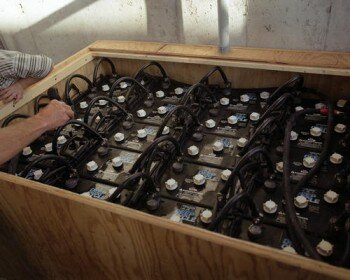
Are you planning to go green by utilizing solar energy? Here are a few key aspects that are worth considering when choosing a home solar panel for maximum power output. It is not advisable to base your decision on price alone.
The cost of installing a solar panel is decided by wattage rating that you are looking at, the brand that you are considering, the warranty period offered by the supplier, the size of the panel, and the certifications that the solar panel might have.
You should also consider as to how it will fit in the place where you are planning to install the panel, whether the certifications that the panel has would enable you to avail discounts from the government, and whether the warranty period covers the payback period also.
The life term of a solar panel is very important. Reputed companies offer a 25-year warranty. If the manufacturer offers only a 10-year warranty and it is connected to a grid system, the panel would have to generate sufficient power to complete the payback within 10 years. Furthermore, only robust solar panel systems should be used for critical applications.
The cost of the solar panel is directly proportional to its power rating in Watts. The price is specified in dollars per Watt. As the power output rating doubles, the cost also becomes twice.
The price of a panel that has a rating of 200 Watts per hour will be twice that of a 100-Watts per hour panel. The output rating of a panel also impacts its physical size.
Another factor that impacts the size is the type of solar cells used in the panel. The output rating should be decided on the basis of the appliances that are required to be run and space available to install the solar panel.
The efficiency of the solar panel in converting sunlight to electricity is a frequently discussed topic and a matter of hot debate. As far as our discussion is concerned, it suffices to know that a 100 watt solar panel will produce 100 watts, irrespective of its efficiency ratings.
The 3 main types of solar cells are:
- Mono-crystalline silicon
- Poly-crystalline or multi-crystalline silicon
- Amorphous or thin-film silicon
Mono-crystalline silicon is the most efficient and the smallest solar cell. The panels made with these cells would, therefore, be the smallest panels.
Poly-crystalline silicon cells come second in efficiency rating and hence, the panels produced with these cells would be larger compared to that made with mono-crystalline cells.
Amorphous silicon cells are the least efficient, as they use least amount of silicon. As a result, the thin film system would occupy more space compared to the panels made with the other two types.
However, the thin film system could offer flexible panels that can be used on curved or irregular surfaces. This aspect has to be kept in mind at the time of selecting the panel for your requirement.
The selection of the solar panel should also be done on the basis of the climatic conditions of the place where it is to be installed. While mono-crystalline and multi-crystalline cells work well in bright cool conditions, amorphous silicon cells perform better at higher temperatures.
Mono-crystalline and multi-crystalline cells are recommended for large roofs without any shade, whereas panels made of amorphous cells are recommended for roofs with partial shading.
A solar panel kept in shade would not produce energy to its rated capacity. Hence, be wary of the feature – shade tolerant – that advertisers most often include their advertisements.
Home DIY Solar Panel Guide

Are you planning to make your own solar panel for your home solar power system? If you are, be sure to check out the Green DIY Energy program.
The program was specially created to teach you step by step how to construct a solar array on a shoestring budget. The instructions are in PDF files and also High Definition (HD) video recordings. Click on the link below and visit Green DIY Energy right now.